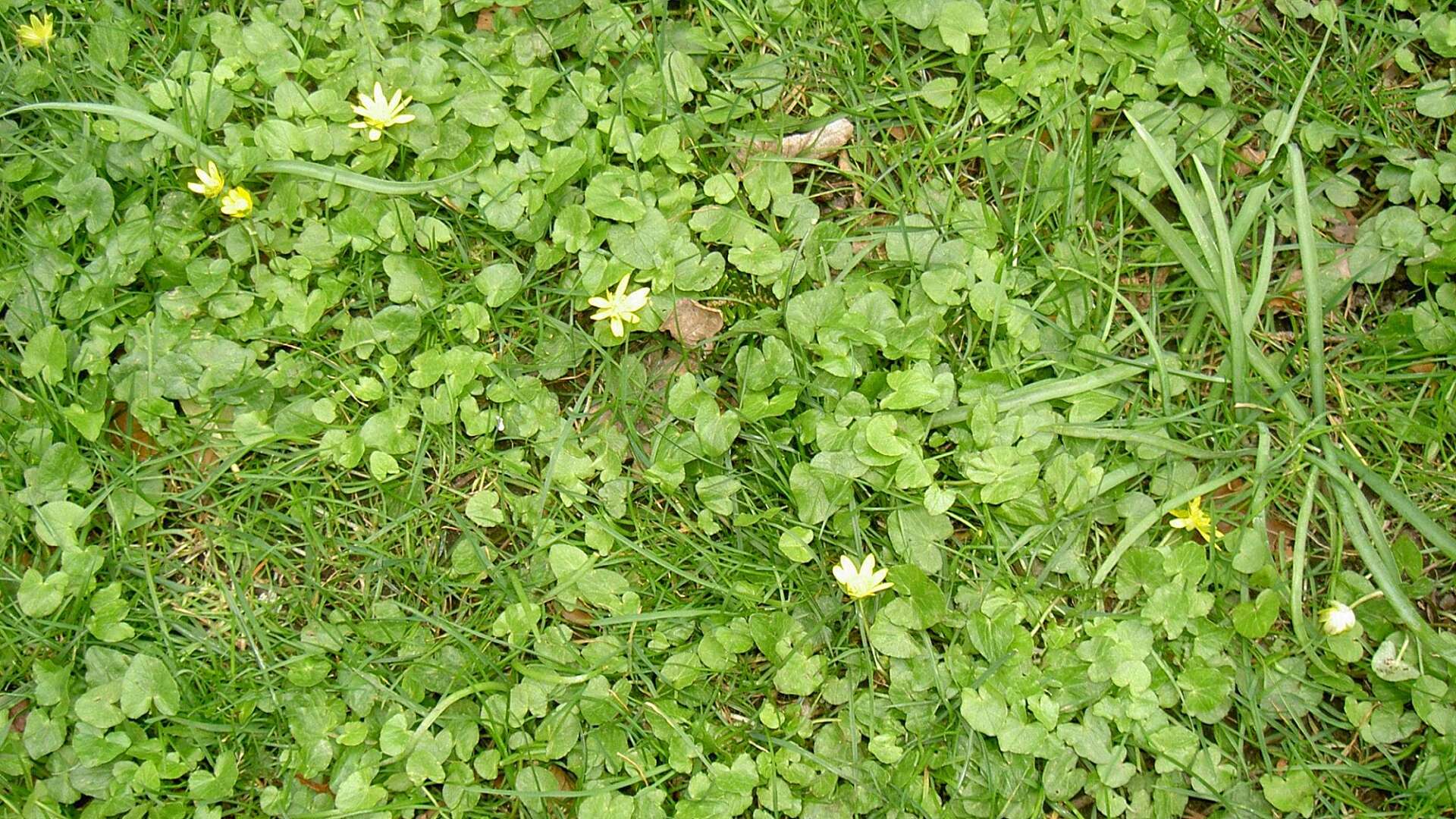Lesser celandine

Other names
pilewort
Latin names
Ranunculus ficaria L. (Ficaria verna, F. ranunculoides)
Weed Type
Perennial Broad-leaved Weeds
Where would I find lesser celandine?
Lesser celandine is a native perennial common throughout the UK in damp meadows, woods, lawns, hedgebanks and beside streams and ditches. It thrives in nutrient rich soil and is a troublesome garden weed. It is shade tolerant and in woodland lesser celandine forms part of the pre-vernal community. It grows on soils with a pH of 4.4 to 6.9. Growth is poor in dry conditions but the plant dies down in summer and then becomes resistant to drought.
Lesser celandine is variable in leaf shape, size and number. Four subspecies are recognised in Britain. Two are native and two are garden escapes. Of the two native subspecies, ssp. ficaria develops seeds (achenes) but does not form bulbils, ssp. bulbifera produces few seeds but develops bulbils in the leaf axils. The former subspecies is diploid and the latter is tetraploid. The two occasionally hybridise.
Lesser celandine has therapeutic and medicinal uses including the treatment of piles. It is poisonous and is said to have caused deaths in cattle and sheep.
Biology
Lesser celandine flowers from February to May. Plant size is an important factor in flower production. The flowers are self or insect pollinated but the pollen of ssp. bulbifera has low viability. There are around 70 seeds per flower in ssp. ficaria. The seeds are shed in June by which time the plant is already senescing. Subspecies bulbifera dies back earlier than ssp. ficaria.
The embryos of fresh seeds are immature and require a period of after-ripening. Seed dormancy is broken by chilling and seed will then germinate in the light or in darkness. In the field, seedling emergence begins in spring and continues into the summer. Lesser celandine is unusual for a dicotyledon in having seedlings with a single cotyledon. A rudimentary root tuber develops after 2-3 months and 1 or 2 foliage leaves will have formed by the end of the first year.
Lesser celandine has fibrous roots and numerous root tubers. The first basal tubers develop as adventitious roots on the axillary buds of the basal leaves. Subterranean tubers are later formed by the appearance of new root initials and buds on the existing tubers. The tubers enter a 6-month resting phase at the end of May following the onset of senescence triggered by longer days and higher temperatures. After the leaves die down a distinct white bud develops and gradually enlarges on the newly formed group of dormant root tubers. Tuber dormancy is broken by chilling. The resting bud on the tubers turns green and begins to elongate about December and a number of adventitious roots begin to develop that will become the new tubers. The first leaves appear in January. The bulbils or tubercles that develop in the leaf axils are similar to the basal tubers and are formed from an adventitious root initial.
Does lesser celandine spread easily?
Both native forms can spread as root tubers. Subspecies bulbifera with bulbils in the leaf axils is considered by some to be the weedier form. It is more of a woodland plant and can develop up to 24 bulbils. However, subspecies ficaria is said to be the form that is found in disturbed habitats and gardens.
How to manage lesser celandine organically
Meadows should be well harrowed in spring to drag out the roots and tubers. If lesser celandine is very abundant it may be better to plough up a meadow and put it down to root crops for 1-2 years before sowing down to grass again.
Lesser celandine survives grazing and trampling by livestock but the plants are reduced in size. In open habitats it is a poor competitor with other plants but in the shade it can form a continuous carpet.